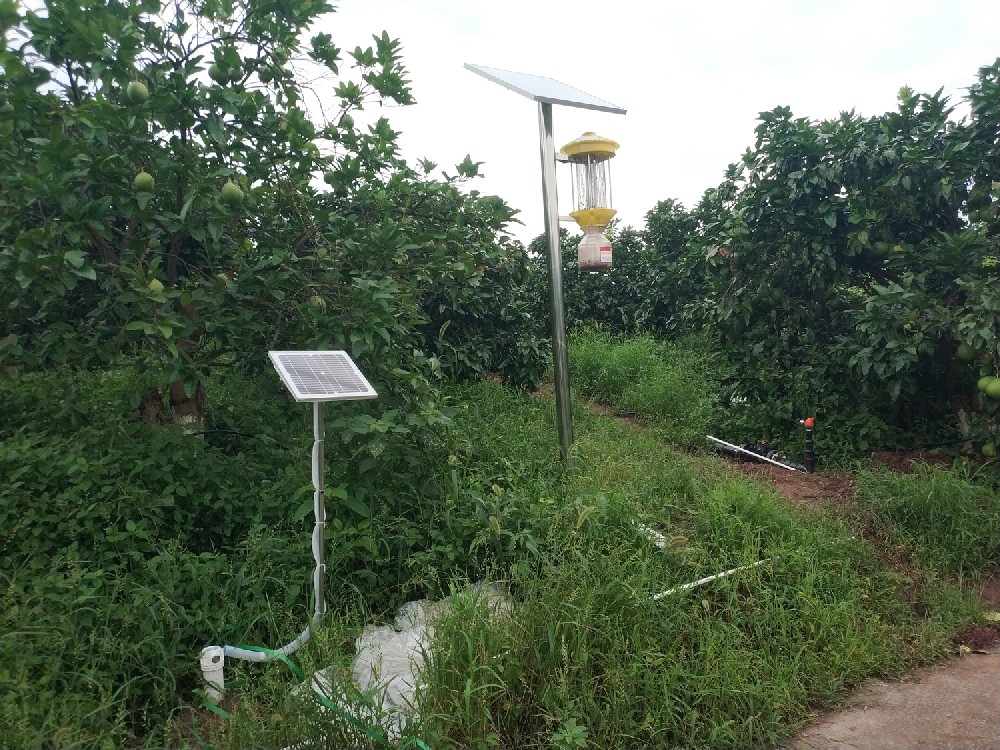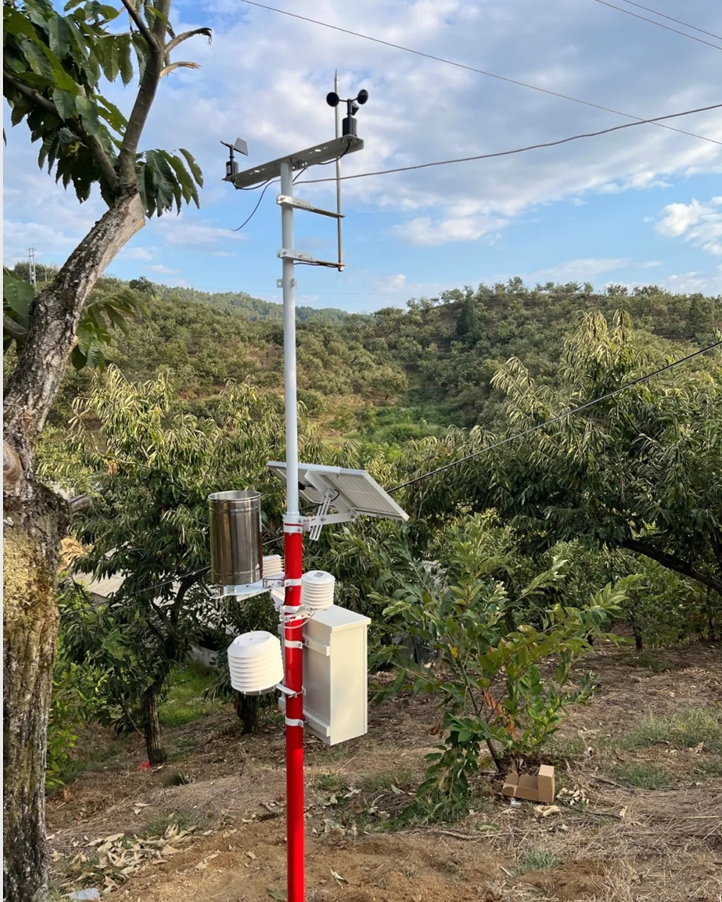

— Case —
—Products—
 Consumer hotline +8618073152920
Consumer hotline +8618073152920 WhatsApp:+8615367865107
Address:Room 102, District D, Houhu Industrial Park, Yuelu District, Changsha City, Hunan Province, China
Time:2022-07-31 11:27:36 Popularity:663
The installation of agrometeorological stations in orchards plays a crucial role in modern agricultural practices. With the growing challenges posed by climate change and the increasing need for efficient resource management, farmers and agricultural professionals have turned to advanced technology to improve productivity and ensure sustainable farming practices. Agrometeorological stations are designed to collect and analyze weather and environmental data that directly impact crop growth and overall orchard health.
Agrometeorological stations are equipped with a variety of sensors to measure key weather and environmental parameters such as temperature, humidity, rainfall, soil moisture, wind speed, solar radiation, and atmospheric pressure. These stations are strategically installed in orchards to monitor the microclimate, which plays a vital role in the development and productivity of fruit trees. The data collected from these stations provide valuable insights into how weather conditions affect plant growth, pest and disease cycles, and irrigation requirements.

1. Optimized Irrigation Practices
Water is one of the most critical resources in agriculture, and inefficient irrigation can lead to both water wastage and poor crop yield. By continuously monitoring soil moisture levels and weather patterns, agrometeorological stations enable farmers to optimize irrigation schedules, ensuring that crops receive the right amount of water at the right time. This reduces water consumption while preventing over-irrigation, which can lead to root rot and other issues.
2. Improved Pest and Disease Management
Agrometeorological stations provide farmers with valuable data that can help predict pest and disease outbreaks. Weather conditions, such as temperature and humidity, are often key factors influencing the development of pests and diseases. With real-time data from the station, farmers can take proactive measures, such as applying pesticides or fungicides, at the most effective times, reducing crop damage and minimizing pesticide use.
3. Enhanced Crop Yield Prediction
By tracking environmental factors such as temperature and solar radiation, agrometeorological stations help farmers understand the conditions that lead to optimal fruit growth. This information allows farmers to make informed decisions about planting, pruning, and harvesting. Additionally, early detection of unfavorable weather patterns, such as frost or drought, allows farmers to take preventive measures to protect their crops.

4. Better Resource Management
Agrometeorological stations help farmers manage their resources more efficiently, leading to reduced costs and increased profitability. By analyzing weather data, farmers can determine the best times for planting and harvesting, minimizing losses and maximizing the use of available land and labor. Additionally, by fine-tuning irrigation and pesticide application schedules based on real-time data, farmers can reduce their reliance on these inputs, resulting in cost savings.
5. Supporting Sustainable Agriculture
Sustainable farming practices are essential for the long-term health of the environment and agricultural ecosystems. Agrometeorological stations provide farmers with data that helps them adapt to changing climatic conditions, reduce the environmental impact of farming practices, and increase the resilience of their orchards to extreme weather events. By implementing data-driven strategies, farmers can contribute to the sustainability of agriculture while maintaining or even improving crop productivity.
Conclusion
The installation of agrometeorological stations in orchards offers significant advantages for farmers, helping them optimize their practices, reduce costs, and improve crop health. By monitoring key environmental variables, these stations provide valuable insights that enable farmers to make informed decisions, leading to more sustainable and productive orchards. As climate change continues to impact weather patterns globally, the use of such advanced technologies will be increasingly essential for the future of agriculture.
Prev:no more
Next:Installation of a weather station monitoring system on the farm
Related recommendations
Sensors & Weather Stations Catalog
Agriculture Sensors and Weather Stations Catalog-NiuBoL.pdf
Weather Stations Catalog-NiuBoL.pdf
Related products
 Combined air temperature and relative humidity sensor
Combined air temperature and relative humidity sensor Soil Moisture Temperature sensor for irrigation
Soil Moisture Temperature sensor for irrigation Soil pH sensor RS485 soil Testing instrument soil ph meter for agriculture
Soil pH sensor RS485 soil Testing instrument soil ph meter for agriculture Wind Speed sensor Output Modbus/RS485/Analog/0-5V/4-20mA
Wind Speed sensor Output Modbus/RS485/Analog/0-5V/4-20mA Tipping bucket rain gauge for weather monitoring auto rainfall sensor RS485/Outdoor/stainless steel
Tipping bucket rain gauge for weather monitoring auto rainfall sensor RS485/Outdoor/stainless steel Pyranometer Solar Radiation Sensor 4-20mA/RS485
Pyranometer Solar Radiation Sensor 4-20mA/RS485
Screenshot, WhatsApp to identify the QR code
WhatsApp number:+8615367865107
(Click on WhatsApp to copy and add friends)